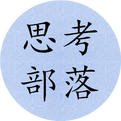Video Course
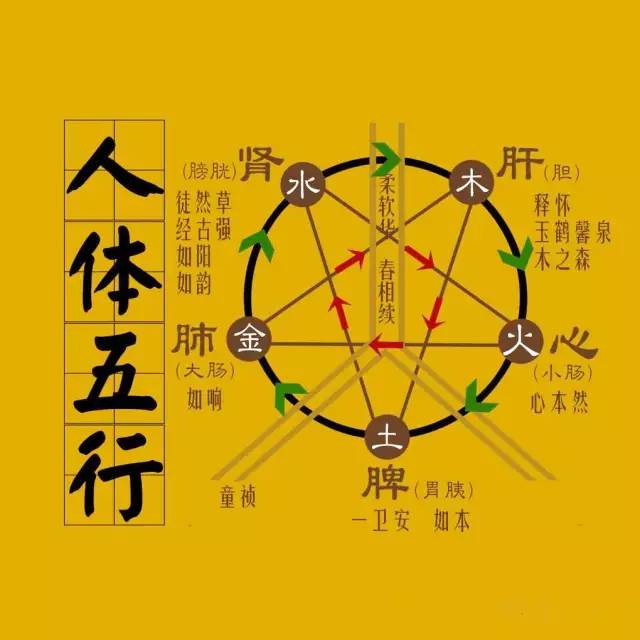
The Five Elements (Wu Xing) is a systematic view in Chinese philosophy that has been widely applied in Traditional Chinese Medicine (TCM), feng shui, destiny analysis, physiognomy, and divination. It was first seen among the Yin-Yang scholars during the Warring States period. The significance of the Five Elements encompasses five basic dynamic processes through the evolution of Yin and Yang: Water (Shui, representing downward moistening), Fire (Huo, representing upward inflammation), Metal (Jin, representing transformation), Wood (Mu, representing bending and straightening), and Earth (Tu, representing agriculture).
The theory of the Five Elements posits that natural phenomena are summarized by the changes of these five energies: Wood, Fire, Earth, Metal, and Water. This not only influences human destiny but also perpetuates the cycles of the universe; it emphasizes a holistic concept, depicting the structural relationships and forms of movement of things.
The temporal symbols of ancient China, the “Ten Heavenly Stems,” are closely related to the Five Elements and Yin-Yang. The completion of the Yin-Yang and Five Elements theory was first noted by Liu Xiang.

Origin
Video Course
The discussion of the Five Elements first appeared in the “Book of Documents”:
“Book of Documents: Great Plan”:
“The Five Elements are: one is Water, two is Fire, three is Wood, four is Metal, five is Earth.”
“Water moistens downward, Fire inflames upward, Wood bends and straightens, Metal transforms, Earth supports agriculture.”
“Moistening downward produces salty, inflaming upward produces bitter, bending and straightening produces sour, transforming produces spicy, agriculture produces sweet.”
“Book of Documents: The Great Yu’s Instructions”:
“Fire, Water, Metal, Wood, Earth, and Grain, all must be cultivated; righteousness, benefit, and nurturing life, all must be harmonious.”
Its origins trace back to the numbers of the River Diagram and the Luo Book. The first number is six for Water, the second is seven for Fire, the third is eight for Wood, the fourth is nine for Metal, and the fifth is ten for Earth.
In the diagram, the elements rotate left to generate life, while in the text, they rotate right to overcome each other. However, Earth in the diagram and text is represented by the number ten, which has no fixed position or specific entity. Only the “Records of the Lu’s Spring and Autumn” places Earth directly in the late summer month, following the sequence of generating life. The “White Tiger Classic” also places Earth directly in the four seasons of Chen, Xu, Chou, and Wei, dividing its prosperity across the four times. After the time of King Wen, the diagram of the later heaven shows Kun and Gen, the two Earths, residing at the transitions of summer, autumn, winter, and spring, indicating that Fire must obtain Earth to form Metal, and Water must obtain Earth to generate Wood.
The Five Elements can also be applied in ontological theories, abstracting a specific theme (induction) for application, which can also be interpreted as the five virtues: benevolence, righteousness, propriety, wisdom, and faith, as seen in the “Book of Documents: Sweet Oath”.
Scholar Chen Jiu-jin proposed that the “Yin-Yang and Five Elements” actually originated from an ancient calendar that divided the year into a Yang year (the first half) and a Yin year (the second half), further dividing the year into five seasons, each lasting 72 days, with each season divided into Yin and Yang months, totaling ten months. The concept of the Five Elements originated from these five seasons, originally named after them.


History
Video Course
By the end of the Western Zhou Dynasty, there was already a theory of five materials. From the “Discourses of the States: Zheng” stating “mixing Earth with Metal, Wood, Water, and Fire to create all things” and the “Zuo Zhuan” stating “Heaven produces five materials, which the people use together; one cannot be discarded” to the “Book of Documents: Great Plan” stating “The Five Elements: one is Water, two is Fire, three is Wood, four is Metal, five is Earth. Water moistens downward, Fire inflames upward, Wood bends and straightens, Metal transforms, Earth supports agriculture. Moistening downward produces salty, inflaming upward produces bitter, bending and straightening produces sour, transforming produces spicy, agriculture produces sweet.” The properties of the Five Elements began to be abstracted and deduced to other things, forming a fixed combinatorial form.
In the late Warring States period, Zou Yan proposed the ideas of mutual overcoming (Ke) and mutual generation (Sheng) of the Five Elements (used to explain the trends of dynastic rule), and fixed the order of overcoming and generating, forming a model of interrelation among things, spontaneously reflecting the internal structural relationships of things and the overall grasp of ideas. During this period, the “Inner Canon” applied the theory of the Five Elements to medicine, which played an important role in studying and organizing the vast clinical experiences accumulated by ancient people, forming a unique theoretical system of TCM.
Xunzi criticized the schools of Zisi and Meng Ke collectively as the Five Elements. On September 24, 1998, researcher Pang Pu of the Chinese Academy of Social Sciences pointed out through the study of the Mawangdui silk texts and Guodian bamboo slips that the Five Elements referred to by Zisi actually meant the five virtues of “benevolence, righteousness, propriety, wisdom, and faith”; these five virtues were later collectively referred to as the “Five Constants”.
Han Dynasty thinker Dong Zhongshu believed that Wood represents benevolence, Fire represents propriety, Earth represents faith, Metal represents righteousness, and Water represents wisdom.
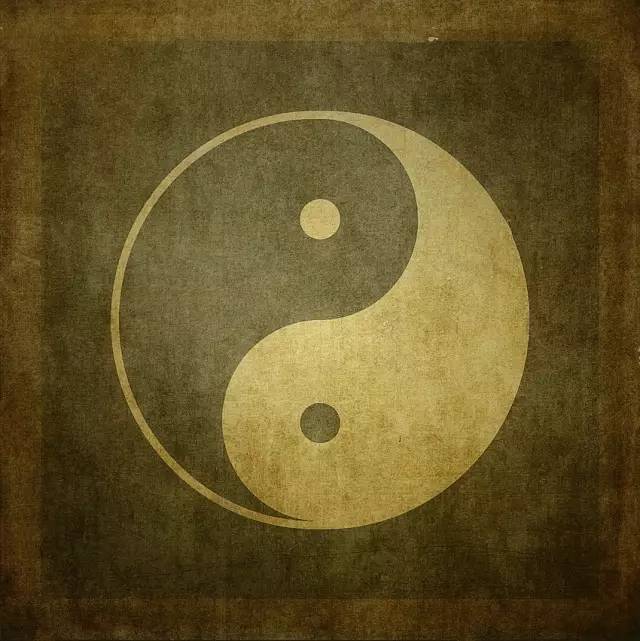

Mutual Generation and Overcoming
Video Course
Mutual Overcoming of the Five Elements: Metal overcomes Wood, Wood overcomes Earth, Earth overcomes Water, Water overcomes Fire, Fire overcomes Metal.
Mutual Generation of the Five Elements: Metal generates Water, Water generates Wood, Wood generates Fire, Fire generates Earth, Earth generates Metal.
The relationship of any element with the other five elements can be categorized as: same as me, generates me, I generate, overcomes me, I overcome.
Each element in the Five Elements has different properties. “Wood says bending and straightening,” meaning Wood has the characteristics of growth and upward movement; “Fire says inflaming upward,” indicating that Fire has the properties of heat and upward movement; “Earth says agriculture,” referring to Earth’s ability to cultivate crops and nurture all things; “Metal says transformation,” indicating that Metal has the properties of severity and change; “Water says moistening downward,” meaning Water has the properties of nourishing and descending. Based on this understanding, ancient people categorized various things in the universe according to the Five Elements, thus conceptually, it is no longer just Wood, Fire, Earth, Metal, and Water themselves, but a large category of various things and phenomena that share comparable abstract properties.
Categories of Five Elements Thought in Chinese Philosophy: In summary, the significance of the Five Elements is as follows:
Refers to five behavioral principles, possibly held by Xunzi.
Refers to five material properties, as held in the “Book of Documents: Great Plan” and the Taiji diagram of Zhouzi.
Refers to five essential material conditions for human life, as held by Cai Mo in the “Zuo Zhuan”.
Refers to five classification principles in taxonomy, as held in the “Records of the Lu’s Spring and Autumn”.
Refers to five “forms of existence” that exist through the flow of Yin and Yang, as held in the “White Tiger Classic” and the “Inner Canon of Huangdi”.
Refers to plants, fire, earth, metal, and flowing water. Their symbolic meanings are respectively vitality, activity or change, nurturing or cultivation, restriction and concealment. This is held by Xiao Ji.


Five Elements in Traditional Chinese Medicine
Video Course
The Five Elements have special meanings in Traditional Chinese Medicine.
“Metal says transformation”, representing properties of settling, severity, and convergence, corresponds to the lungs (Fei) and large intestine (Da Chang) in the human body.
“Water says moistening downward”, representing properties of nourishing, descending, cold, and storing, corresponds to the kidneys (Shen) and bladder (Pang Guang) in the human body.
“Wood says bending and straightening”, representing functions of growth, upward movement, and smoothness, corresponds to the liver (Gan) and gallbladder (Dan) in the human body.
“Fire says inflaming upward”, representing properties of warmth and upward movement, corresponds to the heart (Xin) and small intestine (Xiao Chang) in the human body.
“Earth says agriculture”, representing properties of nurturing, bearing, and receiving, corresponds to the spleen (Pi) and stomach (Wei) in the human body.
The liver governs anger; excessive anger can harm the liver; the heart governs joy; excessive joy can harm the heart; the spleen governs contemplation and worry; excessive thinking can harm the spleen; the lungs govern sadness; excessive sadness can harm the lungs; the kidneys govern fear and fright; excessive fear can harm the kidneys.
From the relationships of mutual generation and overcoming among the Five Elements, it can be understood that each element has four functions: “generate,” “be generated by,” “overcome,” and “be overcome by.” If it is assumed that all things belong to the Five Elements, it means that the interactions among all things can be categorized into four types: “generate,” “be generated by,” “overcome,” and “be overcome by.” If this argument holds, there must be five elements, and there should not be four or six elements. Ancient TCM used this interaction method for diagnosis, while modern physics rarely studies based on these four types of interactions.

Five Elements and the Heavenly Stems and Earthly Branches
Video Course
The specific correspondence is: Jia (Yang Wood), Yi (Yin Wood), Bing (Yang Fire), Ding (Yin Fire), Wu (Yang Earth), Ji (Yin Earth), Geng (Yang Metal), Xin (Yin Metal), Ren (Yang Water), Gui (Yin Water).

Recommended Reading: The Five Elements in the “Inner Canon of Huangdi” (Part)
In traditional Chinese culture, the Five Elements are closely related to directions, colors, divine beasts, etc. There are many discussions about the Five Elements in the “Inner Canon of Huangdi.” For example:
“On the Correspondence of Yin and Yang, Great Discussion on the Five Elements”:
“Heaven has four seasons and five elements, for growth, storage, and for cold, heat, dryness, humidity, and wind…”
“The East generates wind, wind generates Wood, Wood generates sour, sour generates liver, liver generates tendons, tendons generate heart…”
In heaven, it is wind; on earth, it is Wood; in the body, it is tendons; in storage, it is liver; in color, it is blue; in sound, it is Jiao; in voice, it is call; in movement, it is grip; in orifice, it is eye; in taste, it is sour; in will, it is anger. Anger harms the liver, sadness overcomes anger; wind harms tendons, dryness overcomes wind; sour harms tendons, spicy overcomes sour.
“The South generates heat, heat generates Fire, Fire generates bitter, bitter generates heart, heart generates blood, blood generates spleen…”
In heaven, it is heat; on earth, it is Fire; in the body, it is vessels; in storage, it is heart; in color, it is red; in sound, it is Zheng; in voice, it is laugh; in movement, it is worry; in orifice, it is tongue; in taste, it is bitter; in will, it is joy. Joy harms the heart, fear overcomes joy; heat harms Qi, cold overcomes heat; bitter harms Qi, salty overcomes bitter.
“The Center generates humidity, humidity generates Earth, Earth generates sweet, sweet generates spleen, spleen generates flesh, flesh generates lungs…”
In heaven, it is humidity; on earth, it is Earth; in the body, it is flesh; in storage, it is spleen; in color, it is yellow; in sound, it is Gong; in voice, it is song; in movement, it is hiccup; in orifice, it is mouth; in taste, it is sweet; in will, it is thought. Thought harms the spleen, anger overcomes thought; humidity harms flesh, wind overcomes humidity; sweet harms flesh, sour overcomes sweet.
“The West generates dryness, dryness generates Metal, Metal generates spicy, spicy generates lungs, lungs generate skin and hair, skin and hair generate kidneys…”
In heaven, it is dryness; on earth, it is Metal; in the body, it is skin and hair; in storage, it is lungs; in color, it is white; in sound, it is Shang; in voice, it is cry; in movement, it is cough; in orifice, it is nose; in taste, it is spicy; in will, it is worry. Worry harms the lungs, joy overcomes worry; heat harms skin and hair, cold overcomes heat; spicy harms skin and hair, bitter overcomes spicy.
“The North generates cold, cold generates Water, Water generates salty, salty generates kidneys, kidneys generate bone marrow, marrow generates liver…”
In heaven, it is cold; on earth, it is Water; in the body, it is bone; in storage, it is kidneys; in color, it is black; in sound, it is Yu; in voice, it is moan; in movement, it is tremble; in orifice, it is ear; in taste, it is salty; in will, it is fear. Fear harms the kidneys, thought overcomes fear; cold harms blood, dryness overcomes cold; salty harms blood, sweet overcomes salty.
“On the Six Qi and Zang Visions”:
Qi Bo said: “Five days are called candidates, three candidates are called Qi, six Qi are called time, four seasons are called years, and each follows its main treatment… The five movements succeed each other, and all are treated… Spring overcomes late summer, late summer overcomes winter, winter overcomes summer, summer overcomes autumn, autumn overcomes spring, which is called the victory of the Five Elements at the right time, each with Qi commanding its storage.”
“On the Subtlety of Pulse”:
Starting from Yin and Yang, there are channels, from the Five Elements, there are measures… Therefore, sound corresponds to the five tones, color corresponds to the Five Elements, pulse corresponds to Yin and Yang…
“On the Three Parts and Nine Candidates”:
Above corresponds to the heavenly light and stars, below corresponds to the four seasons and Five Elements…
“On the Timing of Storing Qi”:
Huangdi asked: “How to treat by aligning human form with the four seasons and Five Elements, what is to follow, what is to reverse, the meaning of gain and loss, I wish to hear about it.” Qi Bo replied: “The Five Elements are Metal, Water, Wood, Fire, and Earth…”
“On the Five Qi”:
The Five Tastes correspond: sour enters the liver, spicy enters the lungs, bitter enters the heart, salty enters the kidneys, sweet enters the spleen, this is called the five entries…
The Five Tastes to avoid: Spicy disperses Qi, Qi diseases should not consume too much spicy; salty disperses blood, blood diseases should not consume too much salty; bitter disperses bones, bone diseases should not consume too much bitter; sweet disperses flesh, flesh diseases should not consume too much sweet; sour disperses tendons, tendon diseases should not consume too much sour; this is called the five prohibitions, do not allow excessive consumption.
The Five Organs govern: the heart governs vessels, the lungs govern skin, the liver governs tendons, the spleen governs flesh, the kidneys govern bones, this is called the five governors.”
“On the True Evil of Separation and Combination”:
Not knowing the three parts and nine candidates, hence cannot last long. Because not knowing the alignment of the four seasons and Five Elements…
“On Acupuncture”:
Human hair, teeth, ears, eyes, and five sounds correspond to the five tones and six laws… The five tones correspond to Gong, Shang, Jiao, Zheng, Yu…
“On Regulating Menstruation”:
There are excesses and deficiencies in five, there are also excesses and deficiencies in spirit, Qi, blood, form, and will.
Basic Studies of TCM
58 class hours
69 yuan
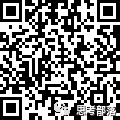
⊙ Thinking Tribe WeChat Official Account: zhw96900
⊙ Copyright Statement: The article is sourced from the internet, if there is infringement, please contact us for deletion 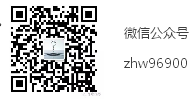
Video Course, click “Read the Original Text“

